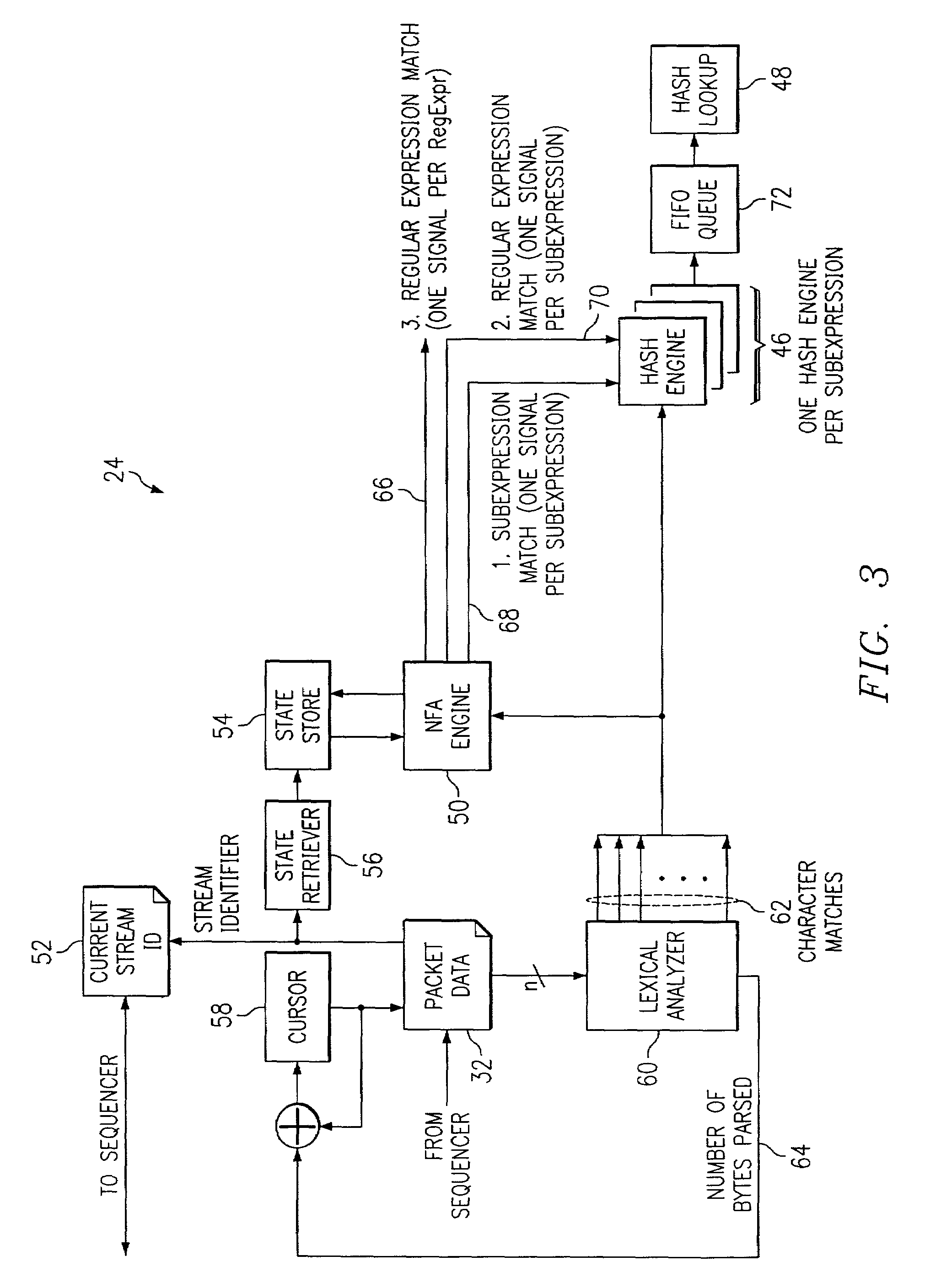System and method for classifying network packets with packet content
a packet content and packet technology, applied in the field of computer networks, can solve the problems difficult modification or change, and difficulty in modifying or changing hard-wired functions, and achieve the effect of slow packet transfer rate, easy modification or change, and easy modification or chang
- Summary
- Abstract
- Description
- Claims
- Application Information
AI Technical Summary
Benefits of technology
Problems solved by technology
Method used
Image
Examples
Embodiment Construction
[0023]Preferred embodiments of the present invention are illustrated in the FIGURES, like numerals being used to refer to like and corresponding parts of the various drawings.
[0024]Content classification allows services to be deployed to packet-based networks based on the content of the packets transmitted over the network. Thus, packets and packet flows may be routed, shaped, modified, queued or dropped based upon the content of the packet as opposed to just using the header fields. However, searching packet content presents a significant challenge since an in-depth review of packet content typically slows packet flow rates, potentially impacting network performance.
[0025]Referring now to FIG. 1, a block diagram depicts a packet content classifier 10 that classifies individual packets and packet flows based on packet content. In one embodiment, line speed packet content classification is achieved by using field programmable gate arrays (FPGA) to perform content searches on individu...
PUM
 Login to View More
Login to View More Abstract
Description
Claims
Application Information
 Login to View More
Login to View More - R&D
- Intellectual Property
- Life Sciences
- Materials
- Tech Scout
- Unparalleled Data Quality
- Higher Quality Content
- 60% Fewer Hallucinations
Browse by: Latest US Patents, China's latest patents, Technical Efficacy Thesaurus, Application Domain, Technology Topic, Popular Technical Reports.
© 2025 PatSnap. All rights reserved.Legal|Privacy policy|Modern Slavery Act Transparency Statement|Sitemap|About US| Contact US: help@patsnap.com



